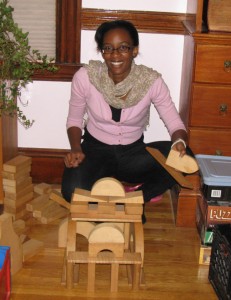Enjoy Hosting International Students
-
-
slice.mit.edu
- 2
Filed Under
Recommended
The Hosts to International Students Program, coordinated by Janka Moss in the International Students Office, matches up new undergrads with MIT faculty, staff, alumni, or non-MIT friends. Hosts provide hospitality and friendship (this is not a home-stay program), and help the students adjust to their new life here. Anyone interested in becoming a host should contact Moss at janka@mit.edu.

In over 25 years as a host, I’ve led students from Albania to Zambia through activities related to the annual cycle of American holidays. Given a well-defined task and appropriate tools, MIT students will create innovative solutions to any new challenge.
Not knowing the conventions of American jack-o’-lanterns, a Rwandan guest made a wonderful African mask, and other students have carved the MIT logos, beavers, and equations.
Every Thanksgiving our guests collaborate on an elaborate infrastructure with building toys while we complete last-minute dinner preparations. Using Lincoln Logs and Tinker Toys for the first time, along with blocks, train tracks, and small plastic people and animals, they gradually fill a large room with fantastic structures. Last year’s project included a Lincoln Log version of Dubai’s 160-story Burj Khalifa tower.
In winter we make gingerbread houses with graham crackers and sticky frosting. We can always recognize the architecture students when they add cantilevered additions and build to daring heights. A guest from Mozambique revealed his civil engineering training with a design that factored in much redundancy and strength.
MIT’s emphasis on collaborative work influences the pretzel-making project, where students spontaneously form groups and create whole dough tableaux. Jigsaw puzzles also require enthusiastic team efforts. Sitting around a small table working on puzzles, students relax and freely talk with each other. Many grew up in former British colonies, and they like to discuss the similarities of their educational experiences and the rigors of their British-style boarding schools.
Since the students hear about the Red Sox, we’ve practiced baseball basics in the street. Using a knotted towel for a ball and a rolling pin for the bat, students from Central Asia and East Africa learned how to swing and run around the bases in the correct order. This activity also inspired a discussion of common idioms such as “out in left field” and “step up to the plate.”
Learn what alumni do with their student guests...
During his first two weeks at MIT, a student from balmy Mauritius marveled that weather at MIT was both hotter (94°) and colder (65°) than he had ever experienced before. I have helped students select their first warm clothes at yard sales. Sometimes these venues remind them of markets back home, and their well-honed bargaining skills impress American sellers. The MIT Women’s League also provides a much-appreciated winter clothing giveaway in October.
Moss says that hosts provide a vast range of activities. Since MIT students rarely see anyone under age 17 around campus, some love playing with their hosts’ children. Along with inviting students to dinners at his house, Richard Lockwood PhD ’79 takes them to a Celtics basketball game, a classical music concert at Jordan Hall, dancing in a club, and to Fanueil Hall.
Living in suburban Bolton, Jack and Kathy Barry introduce their students to picking apples and raspberries in the local orchards. Jack invites students on hikes and on picture-taking expeditions, since he is an excellent photographer. Kathy, a piano teacher, says, “One student from Zimbabwe was a very accomplished flutist. We would spend hours playing classical music, and on occasion we would play in our church.”
Jeff McHarg ’78 and Elaine Dors’s students follow up their apple picking jaunts with pie baking. She says, “We try to take a new student every year and the graduates stay in touch, so we have large numbers around the table for Thanksgiving, Easter, and sometimes Christmas. And, of course, friends and roommates are invited.”
I am always amazed by the sheer adaptability and willingness of these young people to travel around the world and plunge into a different society. They are lively and brilliant, and it’s fascinating to listen to them talk about their lives back home. Having them as my guests over the years has greatly enriched my life and certainly broadened my children’s world view.








Comments
ankur
Sat, 02/04/2017 12:24am
nice blog good to read best of luck to Debbie Levey for helping students
Clemente Pereda
Tue, 02/05/2013 1:05pm
I am very much impressed by the activities described by Debbie Levey in her blog for a Slice of MIT. Bringing students from distant countries in Africa or Asia to the american way of life, the ways things are done and how problems are solved, is a way to avoid difficult tasks for the US State Department, in some cases even stop the development of unfriendly acts towards the american expatriate personnel. From a different angle, it is necessary to promote TV programs in Direct TV, even teaching at a distance, something that President L. Rafael Reif plans to include in his objectives during his Presidency. A good source of ideas is the German Deutsche Welle, with programs in several languages and facilitating the work of the Goethe Insitute to teach German overseas. To conclude, my admiration goes to Debbie Levey for all her initiatives in all directions to help the foreign students. clementepereda@hotmail.com.